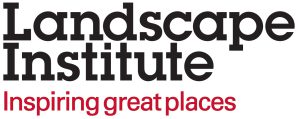Feedback on the latest draft Technical Information Note (TIN) sought from members and non-members alike by 29 June
The Landscape Institute has published the public consultation draft of its updated photography and photomontage guidance.
Photographs and photomontages often support planning applications. In this context, they are technical information. They may or may not supplement a landscape and visual impact assessment (LVIA), and are crucial to the communication of potential landscape and visual effects. Practitioners should therefore use photography and photomontage in a technically appropriate manner.
Find out more about photography and photomontage.
The new guidance, reissued for 2018, has been produced by the Visualisation Guidance Review Steering Group. The steering group is keen to hear views on the draft guidance, and welcomes contributions from members and non-members alike.
Feedback can be sent via email to Bill Blackledge CMLI, Chair of the Steering Group, by 29 June 2018.





Hi,
For context i work for WSP and have undertaken numerous verified photomontages for wind farms and road schemes, including bridges. I am coordinating the internal and external methodologies that we use from now on for LVIAs and work closely with the 3D team and surveyors. Please see comments below. On the whole it is good that the guidance has been tightened up but there is too much emphasis on adopting the SNH guidance which was very much aimed at single site wind farms on hill sides and is inappropriate for a broad range of schemes LVIA is undertaken on. I believe the guidance is ok for urban (single buildings) sites, maybe solar farms on a single field and wind farms but does not take account of linear schemes.
– How do we present Viewpoint photography? If this guidance is applicable to all technical photography and we are to take Viewpoint photographs (i.e. Viewpoints in line with GLVIA3 and those without photomontages) using FF and 50mm then does the same presentation apply? I don’t think it should as it would be totally inappropriate and disproportionate and it should be clearer within the guidance.
– The subject of Planar has not been cleared up sufficiently. There is no comment on how to stitch in Planar in the first place and reverting to Planar from Cylindrical on a Panorama of say 90 degrees is impossible and I don’t believe any of the listed software to be able to do this. The guidance should just state that a lens correction prior to and together with cylindrical stitching is good enough. The only image that will be close to Planar would be the single frame A3 image which is so zoomed in as to negate the distortion. A panaorama will have distortion no matter how you do it and once multiple frames have been stitched cylindrically there is no way to distort them back and certainly not in a free open source software.
– The presentation guidance adopted from SNH is inappropriate and lacks flexibility to cover a variety of schemes (as well as being completely unsustainable encouraging a ludicrous amount of paper printing). Having to stitch 53.5 degree FOV panoramas at 75mm on overlapping sheets ‘might’ be ok for a single building but is not appropriate for linear developments (i.e. road and rail) as typically you need between 75 and 120 degrees to demonstrate the change of view with the landscape effectively (and the most sensitive receptors are typically close to the scheme). You will also not be able to show the full width of a panorama with the scheme cut off across multiple sheets. There is no opportunity to show the full width of the scheme in one image and it is totally impractical to spread out anything between 2 and 5 A1 sheets on a table, tape them together and get the full context of the view. Bridge schemes for example would be extremely difficult to fit onto presentation material from all viewpoints, given that they are supposed to be from those receptors subject to significant changes in the view and will typically be closer to the scheme. When zoomed into 75mm you would end up with multiple A0 sheets just to fit a bridge onto the sheets which is ridiculous. There should be at the very least more scope to only present at 50mm. No one in their right mind will be on site with 4 A1 sheets trying to tape them together, hold them in a curve and compare to the existing view with the wind blowing! I think a more proportionate approach would be to say you can show the full extent of a panorama at 50mm on both/either A3 and A1 sheets (typically these will be viewed digitally anyway these days) and then only for those with significant effects do you need to go to the lengths of following the SNH guidance in terms of presentation. And even then you can have a sheet showing the full extent to give the viewer some context of the landscape and scheme i.e. existing on an A3, proposed at year 1 and 15 on an A3, all at 50mm, then have the A1 53.5 degree panoramas at 75mm subsequently so they are there to use if required.
– No mention of clear acetate with black outline of development, which would be far more appropriate to use on site.
– The guidance contradicts with 02/17 when referring to ‘Verified’. This should be pinned down. The statement in 02/17 is the best description of verified i have seen anywhere and you should stick to it and not muddy the waters by then referring to ‘survey verified’ or saying nowhere clearly stated what verified is, in the new guidance. Anything that doesn’t at least survey the camera location is a photomontage only and ‘verifying’ the type of camera does not make it a verified photomontage. Make it clearer for clients and practitioners alike and be on a stronger footing. A photomontage without surveying uses all the info possible to be as accurate as you can but you cannot verify that the development is sat in the most accurate as possible location within that view without using the best technology you have available which is as you state in 02/17, so would include 3D modelling, surveying a min of 8 reference points etc This is what would be argued in a PI and anyone arguing a photomontage is verified without having surveyed the camera location and multiple points within that view is ultimately best guessing on the location of the development and is on shaky ground in my opinion.
– I disagree with the argument about surveying being more relevant when the subject is closer in the view and in an urban context. The hardest developments to locate on panoramas are linear schemes in the countryside. Also, the further away a development the more it will move within that view by the slightest inaccuracies. So for example a wind farm could move to a completely different mountain by having only a 1 degree inaccuracy when over 1km away, making surveying even more important. Buildings are far easier to locate and have more reference points in an urban context to use. It goes back to the previous point though; for it to be a ‘verified’ photomontage whether the development is nearby or far away the camera location and multiple points across the panorama (both close and distant points preferably in all four corners of each individual frame) should also be surveyed. Anything else is leaving yourself open to guesswork and getting it wrong. You also say ‘sensitive urban contexts’ whereas the most sensitive receptors will typically be in a rural context and affected by a new road.
– Software matching; The best software matching is achieved by matching the camera and lens and the focal length together with survey referenced points within the view and by underlaying the cylindrically stitched panorama to match those target points across the view. FOV is not as important as matching the focal length of the lens (eg a sigma F1.4 fixed 50mm lens is actually 48mm). No reference to best software i.e. 3D Maxx with VRAY plugin. Lidar is not accurate enough for verified but can be used in addition to survey referenced points to help align the model.
– For a truly verified view a panoramic head ‘must’ be used. Parallax error is a nightmare for stitching and the 3D model. Again be stronger on both what constitutes verified and then say best practice.
– View angles/FOV can easily be calculated from the width of a single photograph extrapolated to the overall width of the resulting panorama so long as the original photo proportions are maintained. i.e. it doesn’t need to be from a map.
Regards
Mark